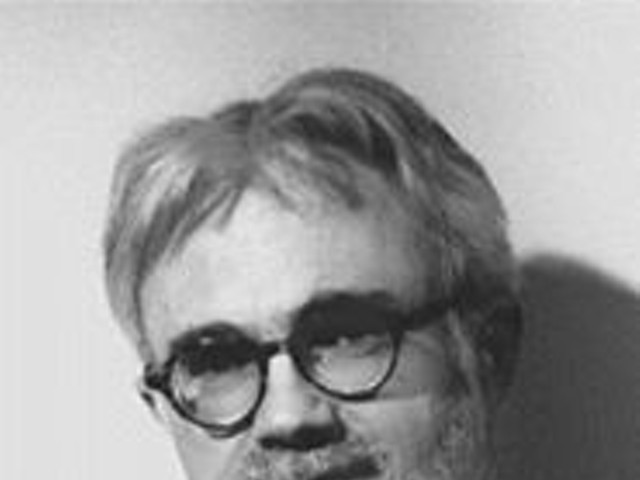This is a shame, for those massive canvases were reaching an artistic level rarely achieved in any medium of design. They were becoming dangerous, a swerve-off-the-road thrill of aesthetic pleasure.
Before proceeding, a sober note of responsibility must be inserted here. Cigarettes are bad. Bad, bad, bad.
And those tobacco companies are bad for having hoodwinked generations of consumers into believing that smoking was not only cool but, in pre-surgeon-general's-warning days, even healthful. The tobacco industry continues to promulgate a terrible lie that has wrecked the lives of millions. Their advertising ploys are insidious, directed at the most vulnerable and malleable members of society -- the young, the underprivileged -- offering the promise of personality and sophistication and delivering addiction and disease.
Bad, bad, bad.
There, now.
Yet it is out of tobacco's status as cultural pariah that the advertising industry has responded with some of its most clever, psychologically complex and exquisite imagery. The billboard especially, and especially in the service of Marlboro, became the most attractive landmark on the postindustrial landscape. The intensity of color; the appeal of the mythic, sex-charged cowboy; the imagined narratives -- these were far more appealing than a view of the new parking garage along I-170, whatever the social impact.
Marlboro, indeed, stands tall above the rest. The Marlboro man is advertising's most iconic creation, and as he has left the American landscape from which he emerged, he dominates the horizon lines beyond our borders. Marlboro is the cigarette the world wants to smoke, and that tall, laconic symbol of the American West is what draws them.
In Marlboro's ultimate billboard creations, nary a slogan was needed. Cowboys: lean, with sun-leathered skin, either in action or at rest (with the presumption of spontaneous action possible at any moment), and -- remarkably, given advertising's attentiveness to the youth culture -- middle-aged or even older. Their images alone identified the product.
Standing alone or in groups, the Marlboro man uniquely combines both hetero-and homoerotic desire. The cut of the chaps accentuate the bulge of the crotch; the smooth jeans hug tight around the curves of the firm cowboy ass.
Sex, especially combined with the risk of death (the risk these cowpokes boldly take whenever they light up and take to the range), is what sells everything, but Marlboro ads go beyond mere prurience. The colors -- the vibrant yellow of a body-length rain slicker, the brown leather of gloves and saddle, the astonishing blue of the sky -- were of an intensity heretofore unimaginable (Busch attains the same overpowering effect on some of its billboards). The power of these massive canvases turn the old tried-and-true equation about nature and culture on its head. Until these signs appeared, it had been a given that when nature and culture competed on aesthetic terms, nature would win. Not so with the Marlboro ads. If hyper-reality has any meaning at all, it can be found there. As John Ford imagined a West that transformed the reality of the place in the middle of the century, the Marlboro man has done the same at the end of it.
For just as Ford caught the cowboy ethos in its sublime death throes, so too does Marlboro. Only now, the fin-de-siècle cowpuncher is even more appropriate for the times. The Marlboro man symbolizes a resistance not only to the end of cowboy culture -- the West, the frontier, rugged individualism -- but to the end of the smoker on the urban plain as well. The message to consumers is obvious: "You are like these men, a dying breed, bonded to each other by your way of life."
To make the connection between urban office worker and hard-riding rancher, Marlboro emphasized the individual figures: stark, strong, broad-shouldered, indifferent. The images have a razor-sharp clarity. No soft focus.
See them huddled together outside office buildings, in the killing heat or the bitter cold, usually laughing, standing aggressively, sharing a smoke, breathing fire.
These visual dramas have been removed from the public thoroughfare for the good of society. Cigarette ads can still be found in magazines and newspapers but, sadly, lack the monumental scale of the billboard. But peruse the RFT and examine some that rival Marlboro for intellectual appeal.
Those in-your-face Winston ads -- "Straight up," the slogan goes. A personal favorite is the one-step-from-the-grave, doddering groom being fed wedding cake from the fingers of his young, chesty blond wife. "She's after my money. Like I care," the caption reads. "Die for pleasure? You bet," is the translation.
Or the Lucky Strike ads, in which backlit black-and-white photos depict the back of a man in a diner booth, lit cigarette in his hand with the smoke affecting a curious twirl. Before him is the waitress, short black dress slit to mid-thigh, breasts thrust toward both the customer and the viewer, the photo cropped just above her smile; like Tom Wesselmann's pop-art sirens, she's given no eyes. The only color is the red of the Lucky Strike logo, emphasizing the lucky strike the viewer is witnessing.
But these still don't quite capture the subtle melancholy of the Marlboro man, caught in shadow as the sun radiates off the steep, red cliff face in the background. He's descending on horseback, leaving behind his solitude before he winds up in some "No Smoking Allowed" bistro.
Need it be said that these images are lies? Is there anyone past the age of 7 who doesn't understand that advertising connects product to fantasy and that if you buy those products your dreams will not come true?
"Art is a lie that brings us to greater truth" is Picasso's oft-quoted maxim. Sometimes it does; sometimes it just brings us to shallower fantasies.
Recently, a new cigarette campaign has popped up along the roadside.
"Mind if I smoke?" the man asks in one. "Care if I die?" the woman replies. These characters have emerged from the tobacco settlement as well. The industry must now de-romanticize its own product. The genius of the advertising industry is still in evidence, taking its own images and investing them with new meaning. The couple come right out of midcentury advertising figures, cartoon illustrations of handsome, successful white people. But now the man, before a real charmer as he reaches for his cigarette, becomes the buffoon. What was alluring now is offensive. He can put that thing back where it belongs, so to speak.
Not surprisingly, the most remarkable of these new anti-smoking ads are those that appropriate the image of the Marlboro man. "Bob, I've got emphysema," one reads as two cowboys encounter each other in the void. The virility has gone out of the men. The speaker is not even granted a more dignified disease. John Wayne at least had cancer, "the big C." Not for Cowboy Bob's pal. "Emphysema" -- polysyllabic and onerous. You can "combat" cancer. Not emphysema.
The Marlboro man is entering into his tragic phase.





